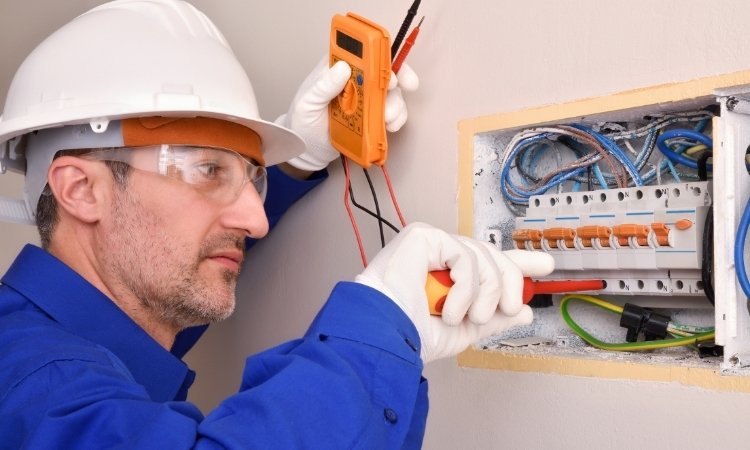Curious about how to install an electrical panel in your Singapore home without any hiccups? Installing an electrical panel is a big job that needs careful planning, especially in Singapore’s tightly regulated environment. The article simplifies this step-by-step in an interesting manner with a local focus on Singapore homes, be it an HDB flat or a landed property.
We will explain all the steps and make your experience safe and easy to navigate by taking your safety and local regulations into account. Moreover, LS Electrician Servicing Singapore’s detailed process is a guide on this matter. Let’s also not forget their efficient services in lighting installation, switch installation, and power socket installation domains.
Why You Might Need to Install an Electrical Panel
Electrical panels in Singapore are the core of the power system in your home. They distribute electricity safely to every room. A house may require the installation of an electrical panel when renovating an older HDB flat, constructing a new house, or adding power-hungry appliances like air conditioners or electric vehicle chargers.
The rules governing the Singapore market imposed by the Energy Market Authority (EMA) are very strict, making it all the more necessary to get it right. Let’s walk through how to do electrical panel installation the safe and legal way.
Step-by-Step Guide to Electrical Panel Installation
1. Know Singapore’s Electrical Rules
Before you start installing an electrical panel, you must understand Singapore’s regulations. The EMA requires all electrical work to be done by a Licensed Electrical Worker (LEW). It’s illegal to do electrical panel installation yourself in Singapore because it can be dangerous.
The LEW adheres to the Singapore standard SS 638:2018, the official document on how to make safe electrical installations. Violation of these rules may result in huge fines or even accidents.

2. Figure Out Your Power Needs
First, decide what kind of electrical panel your home needs. Generally, HDBs in Singapore tend to require smaller panels of 40-63 amps. Landed properties or condos might require bigger ones, like 100-200 amps, especially if you have heavy appliances.
To determine the electrical load of your home, speak to your LEW. Consider such objects as water heaters, ovens, or smart home devices that have become a cliche of modern houses in Singapore.
3. Pick the Right Electrical Panel
Choosing the right panel is key to a successful electrical panel installation in Singapore. Popular brands like Schneider Electric, Hager, or ABB are widely used here. Ensure that the panel incorporates Residual Current Circuit Breakers (RCCBs) to be safe, according to EMA.
Choose a panel that has additional connectivity that allows you to expand the system in the future, such as solar inverters that are becoming popular. The panel should go in a dry, easy-to-reach spot, away from bathrooms or kitchens, to meet Singapore’s safety rules.
4. Hire a Licensed Electrical Worker
You can’t install an electrical panel in a house without an LEW in Singapore. They are trained to do it all, from wiring to connecting to the power grid of the SP Group. They also ensure the panel is earthed appropriately, which is very essential in Singapore, which has a lot of humidity.
Depending on the complexity of the job, a good LEW will be able to charge S$1,500 to S$3,000 to install an electrical panel. You should always ensure that your electrician is EMA-certified.
5. Get the Right Permits
Your LEW will handle permits from the EMA and SP Group. They will provide panel details and a wiring plan, which will be approved. In case you are living in an HDB flat, you will also require the permission of the Housing and Development Board.
In the case of condos, the Management Corporation Strata Title (MCST) should approve. These licences make your electrical panel installation in Singapore safe and legal.
6. Install the Electrical Panel
The LEW will install the panel at an appropriate location, such as a utility closet or garage. They may consider a small panel since space is limited in an HDB flat. They will link the primary power supply, circuit breakers, and grounding system.
Everything must be secure to avoid power trips, which can happen in Singapore’s high-demand homes. This is where the professionalism of your LEW comes in really handy.

7. Test and Activate the Panel
After installing an electrical panel, the LEW tests it thoroughly. They test circuit breakers, RCCB, and voltage stability to make sure they are all functioning. The SP Group may inspect the setup before connecting it to the grid. Once approved, your new panel will power your home smoothly and safely.
How Much Does It Cost in Singapore?
The cost to install an electrical panel in a house depends on your home’s needs. In the case of an HDB flat, a 40-amp panel will cost about S$800 to S$1,500, inclusive of labor. In landed properties, a 100-amp panel may cost between S$2,000 and S$4,000.
The permits range between S$50 and S$200, and upgrading of wiring may require S$500 to S$1,000. Your LEW can give you a detailed quote.
Why You Need a Professional
Due to the strict regulations and heavy power requirements, professional electrical panel installation is necessary in Singapore. An LEW will give you the peace of mind that your panel is up to EMA standards and less likely to cause electrical fires.
They even provide warranties, often between 1 and 2 years, allowing you to sit back and rest knowing your house is secure.
Conclusion
In the end, it is a serious task to install an electrical panel in your Singapore home that requires expertise. Engaging an LEW, selecting the appropriate panel, and adhering to the EMA regulations will supply you with a sound and secure power system.
In an HDB, condo, or landed property, professional electrical panel installation in Singapore can help keep your home powered and safe.
